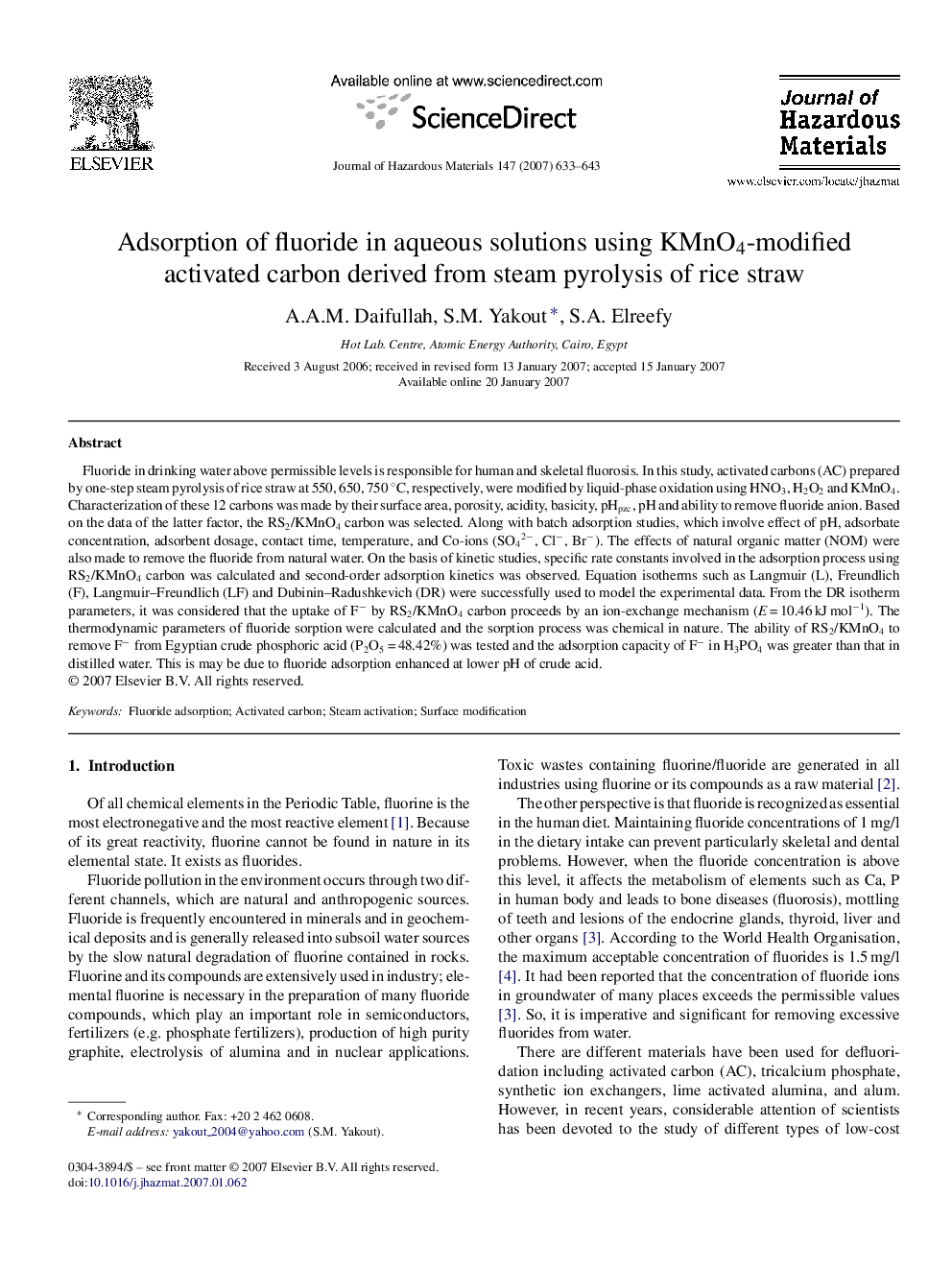| Article ID | Journal | Published Year | Pages | File Type |
|---|---|---|---|---|
| 584163 | Journal of Hazardous Materials | 2007 | 11 Pages |
Abstract
Fluoride in drinking water above permissible levels is responsible for human and skeletal fluorosis. In this study, activated carbons (AC) prepared by one-step steam pyrolysis of rice straw at 550, 650, 750 °C, respectively, were modified by liquid-phase oxidation using HNO3, H2O2 and KMnO4. Characterization of these 12 carbons was made by their surface area, porosity, acidity, basicity, pHpzc, pH and ability to remove fluoride anion. Based on the data of the latter factor, the RS2/KMnO4 carbon was selected. Along with batch adsorption studies, which involve effect of pH, adsorbate concentration, adsorbent dosage, contact time, temperature, and Co-ions (SO42â, Clâ, Brâ). The effects of natural organic matter (NOM) were also made to remove the fluoride from natural water. On the basis of kinetic studies, specific rate constants involved in the adsorption process using RS2/KMnO4 carbon was calculated and second-order adsorption kinetics was observed. Equation isotherms such as Langmuir (L), Freundlich (F), Langmuir-Freundlich (LF) and Dubinin-Radushkevich (DR) were successfully used to model the experimental data. From the DR isotherm parameters, it was considered that the uptake of Fâ by RS2/KMnO4 carbon proceeds by an ion-exchange mechanism (E = 10.46 kJ molâ1). The thermodynamic parameters of fluoride sorption were calculated and the sorption process was chemical in nature. The ability of RS2/KMnO4 to remove Fâ from Egyptian crude phosphoric acid (P2O5 = 48.42%) was tested and the adsorption capacity of Fâ in H3PO4 was greater than that in distilled water. This is may be due to fluoride adsorption enhanced at lower pH of crude acid.
Related Topics
Physical Sciences and Engineering
Chemical Engineering
Chemical Health and Safety
Authors
A.A.M. Daifullah, S.M. Yakout, S.A. Elreefy,
